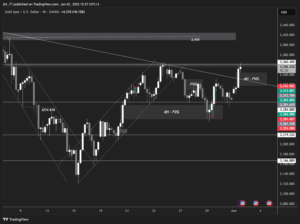European stocks declined with anticipation of inflation data in the eurozone.
European markets opened Thursday’s trading lower before the release of preliminary inflation data for the Eurozone for February. The annual core CPI – excluding food and energy prices – is expected to remain at 5.3% in February.
The European STOXX 600 index fell by 0.67% to 454 points, at exactly 08:10 GMT, with travel corporations declining by 1.7%, while technology stocks fell by 1.2%.
BNP Paribas, the eurozone’s largest bank, fell 1.8% after Belgian state participation agency SFPI said the country was preparing to sell a third of its 7.8% stake.
The British FTSE 100 index fell by 0.37% at 7887 points, the German DAX fell 0.98% to 15155 points, and the French CAC fell 0.80% at 7176 points.
Also, the European Central Bank’s publication on the last monetary policy meeting is expected to be issued later today to clarify more about policy directions for the coming period.
Bond yields drop in US stocks, and the Nasdaq Composite Index records its lowest monthly close.
US indices fell in Wednesday’s session, pressured by the rise in bond yields to historical levels after manufacturing data indicated an increase in inflation rates.
The Institute for Supply Management survey showed a contraction in manufacturing in the United States in February and an increase in raw material prices last month, which led to a rise in the yield of US Treasury bonds for ten years, touching 4% levels for the first time in 4 months. The yield of US Treasury bonds for two years jumped to Its highest level in more than 15 years after touching 4.9% levels.
The S&P 500 fell 17 points, or 0.4%, in the Wednesday session closing at 3,952 points, and Tesla stock fell 1.7% ahead of the Investor Day event.
The Dow Jones index closed flat at 32,661 points, remaining near its lowest level in 4 months.
Morning losses for the Dow Jones narrowed, with Caterpillar rising 3.3% after the construction equipment maker said it had reached a preliminary agreement with a union to represent workers at four facilities. The Nasdaq Composite Index fell by 0.7% to 11,379 points in Wednesday’s session, its lowest close in a month, and closed below the 200-day moving average of 11,405 points.
These pressures on the stock come after Novavax, the Corona vaccine maker, raised doubts about its ability to continue in business and announced plans to cut spending as it prepares for the fall vaccination campaign. Novavax stock fell by more than 25% in the Wednesday session, recording its lowest close in nearly two years.
Japanese stocks flattened at the close.
Japanese stocks ended Thursday’s trading session flat after a disappointing investor day for Tesla, and fears of a tighter monetary policy by the US Federal Reserve outweighed the decline in the yen.
The Nikkei index gave up its gains earlier in the session to end it at 27,498.87 points, although it has been hovering in the middle of its trading range over the past five weeks. The broader Topix index fell 0.16% to 1994.57 points.
Investors were surprised by a jump in the yield on US Treasury bonds to the highest level in months. At the same time, US Federal officials consider whether raising interest rates for a more extended period will be sufficient to curb inflation or will there be a need for more tightening in monetary policy. This has led the Japanese yen to decline, falling by about 0.35% in its most recent trade to 136.69 against the dollar.
Bitcoin stables despite renewed regulatory concerns.
Bitcoin stabilized on Thursday, trading below $23.5 thousand, after fears of regulatory campaigns, following the decline in Silvergate Bank’s stock.
Silvergate Bank announced that it would delay submitting its annual report Wednesday, which led to a drop in its share price of more than 10% in after-hours trading on Wall Street.
The cryptocurrency bank said it would have to delay filing its annual K-10 report for the fiscal year of 2022, needing more than two additional weeks to complete it. The bank is currently analyzing some regulatory inquiries. Bitcoin settled at $23,390.50 at 08:15 GMT. Ethereum settled at $1,643.54, while Ripple fell 0.80%, at 37.96 cents.
EUR/USD rises supported by eurozone inflation.
The dollar suffered losses Thursday, March 2, as persistent inflation made the euro look forward to its best week in a month and a half. The dollar lost 0.9% against the euro overnight.
The euro rose 1.2% over the week, last trading at $1.0667 in light of higher-than-expected German inflation in February, which increased pressure on the European Central Bank to raise rates after unexpectedly strong readings in France and Spain. Inflation data for the eurozone is due later today.
The dollar is giving up some of its gains.
The yen rose slightly today, Thursday, to 136.04 per dollar in early trade, while the Australian dollar held onto Wednesday’s gains despite weaker-than-expected growth data and some signs that inflation may have peaked.
Better-than-expected manufacturing activity in China pushed the yuan to its biggest one-day jump on Wednesday, rising about 0.9%. The South Korean currency jumped more than 1 percent against the dollar.
In the most recent transactions, the Australian dollar recorded $0.6759 and its New Zealand mate $0.6255, while the yuan recorded 6.8731 per dollar in foreign trade.
The pound sterling settled at 1.2027 dollars. This came after the statements of the Governor of the Bank of England, Andrew Bailey, who said nothing had been decided regarding raising interest rates in the future, prompting traders to reduce their bets on a larger interest rate hike.
Gold is falling as investors are increasingly concerned about rising interest rates.
Gold prices fell on Thursday, March 2, as a new set of global economic data reinforced investors’ concerns about interest rates remaining high for longer than expected. Gold in spot transactions fell 0.2% to $ 1833.57 an ounce after reaching the highest level in a week yesterday, Wednesday. US gold futures fell 0.3% to $1,840.50.
The dollar index rose 0.1%, making the yellow metal more expensive for buyers holding other currencies.
Data on Wednesday showed that manufacturing activity in the United States contracted for the fourth consecutive month in February. Still, there were signs that factory activity was beginning to level up, with a measure of new orders rising from the lowest level in more than two-and-a-half years.
Fed policymakers will present updated projections for the path of the interest rate and the economy at the end of their March 21-22 meeting.
Among other precious metals, spot silver fell 0.5% to $20.90 an ounce, palladium lost 0.8% to $1428.85, and platinum fell 0.5% to $950.64 after a 3-week high in the previous session.
Oil retains its gains with a strong economic recovery in China.
Oil prices rose in early Asian trading Thursday, March 2nd, continuing the gains since the previous two sessions, amid indications of a solid economic recovery in China, the world’s largest oil importer, offsetting the impact of concerns about rising US crude inventories.
Brent crude futures rose 12 cents, or 0.1%, to $84.43 a barrel, while US crude futures rose 7 cents, or 0.1%, to $77.76 a barrel.
Both crude futures rose about 1% in the previous session after data showed that manufacturing activity in China in February grew at the fastest pace in more than a decade, in new evidence of economic recovery after removing strict Covid-19 restrictions.
However, the increase in crude oil inventories in the United States for the tenth week in a row capped the gains in the market. The US Energy Information Administration reported that oil stocks increased by 1.2 million barrels on February 24 to 480.2 million, the highest level since May 2021. In contrast, analysts expected an increase of 500 thousand barrels.
However, record exports of US crude oil kept the increase lower than in previous weeks, as shipments rose to 5.6 million barrels per day last week, according to the Energy Information Administration.
“US crude inventories slowed their increases but remained above a five-year range, with the increase slowing as total exports hit new records,” Citi analysts said in a note to clients.
Meanwhile, crude oil processed by Indian refineries reached record levels in January, preliminary government data showed on Wednesday. The country boosted imports of Russian barrels that Western countries have shunned.
Disclaimer: This article is not investment advice or an investment recommendation and should not be considered as such. The information above is not an invitation to trade and it does not guarantee or predict future performance. The investor is solely responsible for the risk of their decisions. The analysis and commentary presented do not include any consideration of your personal investment objectives, financial circumstances, or needs.





